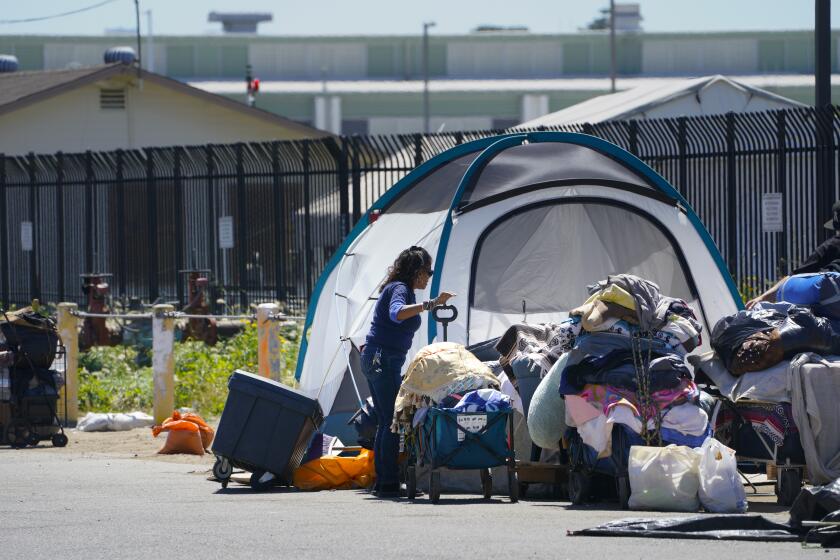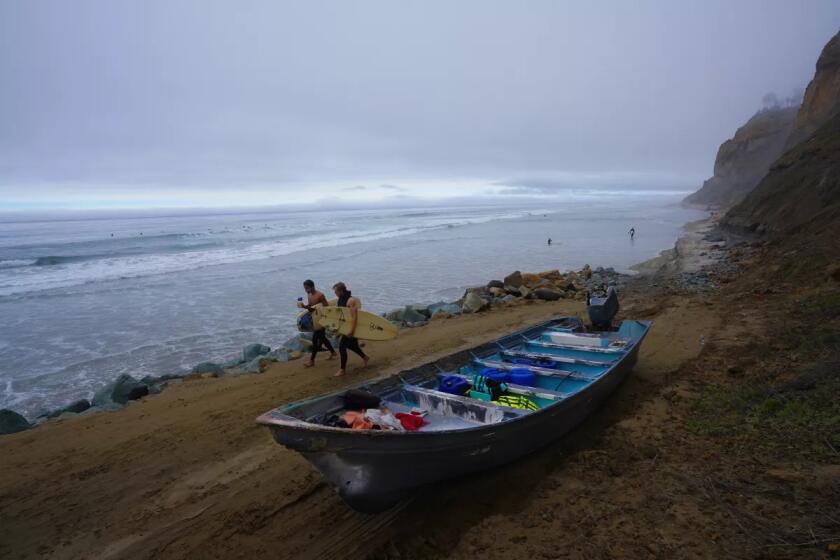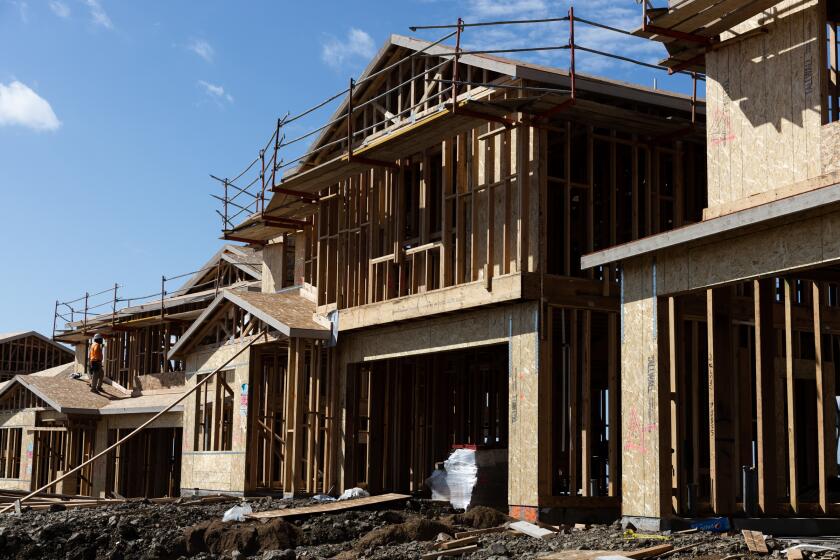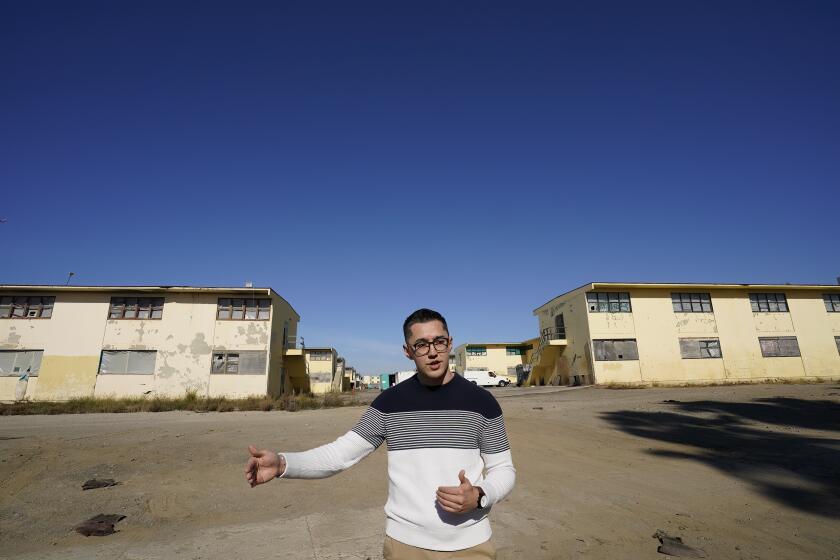Column: Why ‘sanctuary’ law politics feel different from past immigration flare ups
On one day last week, all the complexities of San Diego’s immigration and border politics were on display.
At the county building, the Republican Board of Supervisors voted on Tuesday to back a federal lawsuit seeking to overturn California’s immigrant sanctuary laws.
Nearly 1,500 miles away in Mexico City, a large bipartisan contingent of San Diego’s political and business leaders were talking about improving border traffic waits, bolstering cross-border commerce and stopping Tijuana sewage from fouling the ocean off Imperial Beach.
San Diego is like nowhere else because of its geographic, economic, cultural and social ties to Mexico. The region has the busiest border crossing in the Western Hemisphere.
The shared interests, relationships and on-the-ground familiarity makes for a nuanced reality not usually found in the typical blunt immigration debate, whether it occurs in Dubuque or San Diego.
Immigration politics often heats up in cycles and is usually linked to economic downturns and significant increases in illegal border crossings. Right now, the economy is humming and illegal crossings were down significantly last year, though they have increased recently. Also, crime rates in San Diego are at historic lows, despite some upticks in violent crime (not attributed to unauthorized immigrants).
Candidate and President Donald Trump has broken that cycle with his demand for an expanded wall, castigation of unauthorized immigrants as criminals and targeting of California’s laws that give some protection to those here who mostly don’t cause serious trouble.
But Trump is not the only reason why things seem different. Immigration-related issues only occasionally came into the purview of state and, particularly, local government. Not anymore.
Long before Trump’s candidacy and presidency, the California Legislature and Gov. Jerry Brown moved aggressively to expand benefits to unauthorized immigrants — including allowing them to get driver licenses — and protect them from deportation if they hadn’t done anything more than commit minor infractions. Bill after bill was signed.
This was when Democrat Barack Obama was president and his administration had ramped up deportations well beyond what they had been.
The governor boasted that the state was filling the void on immigration reform created by Congress.
“While Washington waffles on immigration, California’s forging ahead,” Brown said when he signed the Trust Act in 2013. “I’m not waiting.”
There were critics, but they seemed fewer and their voices weren’t that loud. As now, the Democrats controlled state government and were largely supportive of the immigrant bills. Republicans lawmakers, though mostly voting against them, muted their criticism, lest the party further alienate Latinos as it had in the past.
“Mostly what we had been doing was watching Washington, D.C., watching what’s been going on in Arizona,” said Thad Kossuer, a UC San Diego political science professor.
But California has never fully lived up to its image as friendly to unauthorized immigrants. Proposition 187, which authorized withholding state services from immigrants without legal standing, passed in 1994 — by a two-thirds majority in San Diego County — though it was largely overturned by the courts.
The Minuteman Project, which for a time organized militia units to patrol the border in California and other states, had its supporters in some pockets. And many people across the spectrum backed stronger border security and crackdowns, such as Operation Gatekeeper, launched in San Diego under President Bill Clinton.
It almost gets lost in all the shouting that we’ve had a border fence here longer than most places.
“This is not an all-blue state in immigration politics,” Kossuer said.
To be sure, all those immigration moves had many vocal critics locally.
Then Trump came along and made immigration his political centerpiece with some extreme proposals — remember when he suggested deporting all 11 million unauthorized immigrants? — and superheated rhetoric.
California went on the defensive -- defiantly -- and passed the sanctuary laws to give even more protection to unauthorized immigrants. Some cities got into the act. The San Diego City Council passed a resolution condemning Trump’s wall and directed the city attorney to file a brief in support of a lawsuit seeking to thwart Trump’s move to ban refugees from some countries from entering the U.S.
On the flip side, Escondido in recent years had weighed into the immigration realm with efforts to go after landlords who rent to unauthorized immigrants and setting up daytime police traffic checkpoints in heavily Latino areas.
But the real flash point came Jan. 1, when the state law SB 54, limiting local police agencies’ interaction with Immigration and Customs Enforcement, took effect. There are misconceptions about what this sanctuary law does. Contrary to some claims, it does allow local authorities to turn perpetrators of serious and violent crimes over to ICE.
Regardless, this did not sit well in Republican strongholds in Southern California. Now the state was telling cities and counties how their police could and couldn’t work with another law enforcement agency. The locals did more than just complain about it. Orange County, San Diego County, Escondido and other cities recently took official action to join or support Trump’s lawsuit.
For decades, local governments, particularly in conservative areas, have chafed at state mandates, which often don’t come with enough, if any, state funding. The sanctuary laws built on that frustration.
But this “revolution” in California, as Trump called it, also has come during an election year when some leading the charge against the sanctuary laws — such as Escondido Mayor Sam Abed, Supervisor Kristin Gaspar and El Cajon Mayor Bill Wells — are running for re-election or higher office.
“Trump has stirred up a segment of the population concerned about (immigration) and you have local officials try to exploit that,” said Tom Shepard, longtime San Diego political consultant.
The bulk of San Diego’s establishment — some Democrats and mostly business-oriented Republicans — has largely kept out of the immigration fight. Many local leaders see it as an impediment to their mission to improve cross-border relations and trade that they believe are vital to the region’s well-being. The San Diego Regional Chamber of Commerce sponsored the Mexico City trip last week, as it has annually.
“The fact that the chamber and others have kept a laser-like focus on that is one of the more courageous things I have seen in recent years, and I applaud them for that,” Shepard said.
It’s not that they aren’t concerned about illegal immigration or think it’s a good thing, but they want it addressed through comprehensive federal reform. The harsh rhetoric and tougher policies don’t make their dealings with Mexico any easier.
In a border city, immigration is not abstract. It’s a firsthand experience. There are real frustrations and negative impacts from people crossing the border illegally. There’s an economic engine that needs fuel from cross-border trade, along with generations of rich binational culture baked into the region’s DNA.
It’s safe to say that those realities will continue to coexist, uneasily, for a very long time, as they always have.
Tweet of the Week
Goes to Sara Libby (@SaraLibby), managing editor of Voice of San Diego reflecting on the U-T’s Sandra Dibble story about the $122 million upgrade for the Otay Mesa Port of Entry.
“Reminder, re: the president’s tirade about California’s border -- the folks who actually live here keep trying to make the border easier to cross.”






